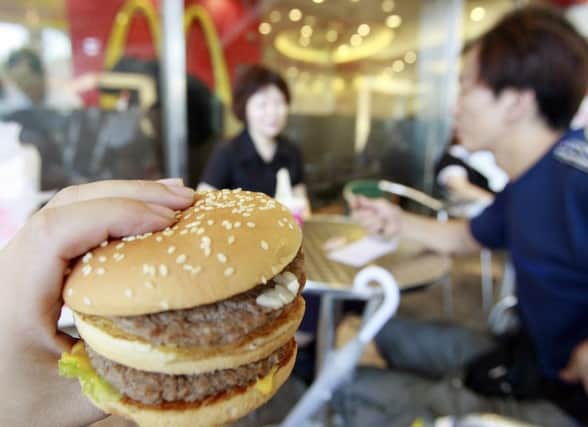Jane Bradley: Do you want fries, and a waitress, with that?


“The Chicken McNuggets were for you, madam, and the Big Mac for you, sir?”
A waitress? In McDonalds? What madness is this?
You’re not dreaming. Table service at Maccy D’s is to become a reality in the not-too-distant future as the concept is rolled out to 11 restaurants – including one in Scotland – in just a few weeks. Fans of the grab-it-and-go concept can rest easy, however; the option of ordering at the counter will remain and the sit-down meal won’t exactly be silver service. More of a paper-plate service.
Advertisement
Hide AdAdvertisement
Hide AdThe twist is the latest in the tale of a company that has an incredible, chameleon-like ability to adapt itself to a changing culinary environment.
From greasy burger joint to something akin to health food – well, almost – the firm has experienced an amazing metamorphosis in recent years, while somehow retaining its loyal Big Mac-loving fans.
I’m not a McDonalds aficionado, but even I can see the changes. My first visit to the golden arches was in the late 1980s, when it had recently opened up in my home town. It was the place for children’s parties. It was sticky, plasticky and had lurid statues of the ubiquitous clown – yes, Ronald himself – dotted around the walls. It was exciting, above all, exotically American and felt incredibly decadent … for a primary school kid, anyway.
A few years ago, it gradually morphed into not just a fast-food joint, but, simultaneously, a civilised coffee place. The lurid clown-like colours were replaced by more subtle brownish hues, more akin to a Starbucks or Cafe Nero.
There have been the scandals: it was embroiled in the longest running court case in English history when it decided to use its corporate might against Greenpeace protesters handing out pamphlets which it found defamatory. However, there have also been the quirky-but-they-worked ideas. A McDonalds in Glasgow last year started playing classical music in a bid to calm troublemakers after police were called to it 200 times in just 14 months.
Perhaps most impressively, in 2012, it managed to become the official restaurant of the Olympic Games, which was either an incredibly bizarre PR choice on the part of the Olympic Committee or it really has managed to shake off its fast-food image.
Suddenly, its ads featured a different kind of customer. Middle-class people, office workers – some wearing suits, some attractive, independent, young women, smiling, choosing to have their gossipy coffee dates at Maccy Ds.
One ad showed a young office worker heading to McDonalds after a bad first day at a new job. Another depicted a series of lacklustre work lunches: miserable microwave meals, dreary looking soup. Enter Maccy D’s! Succulent chicken wraps, fresh, crisp lettuce and peppers chopped before your very eyes. This was the advent of the new, healthy McDonalds. The McDonalds that is frequented by not just weekend dads attempting to curry favour with the kids or hardcore lovers of the sludgy meat patty and shiny yellow bun, but by everyman. Everywoman. You.
Advertisement
Hide AdAdvertisement
Hide AdIt is the world’s biggest restaurant chain, its golden arches an alternative American embassy for hungry travellers – or those on a quest for a clean toilet. But while decent loos and a Big Mac are standard the McDonalds world over, other menu items are not. I once enjoyed a beer in one of its Prague branches, while a “Croque McDo” – a sort of fast-food twist on the French classic sandwich – is apparently de rigeur in Paris. In Japan, you can get a patty of Panko-battered shrimp, topped with ebi shrimp tempura sauce, while in India, the McCurry Pan is popular – curried vegetables baked in a creamy sauce with an edible bread pan. This customisation is arguably the key to its universal success. It has an uncanny ability to morph itself into whatever the public wants. .
I can’t help wondering, however, if table service might be a step too far, turning what is currently an anonymous, guilty pleasure into a more formal experience. What does it think it is? Nandos?